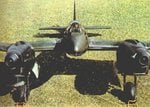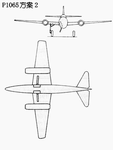davparlr
Senior Master Sergeant
Soren, are you dabbling in airframe structures again? or do you have the actual airframe design and load calculations at hand and rendering an expert opinion?
Accounting for an imbedded engine bay in a wing would be similar to building a mid wing airframe like a F4F Wildcat. The fuselage(engine) carry through structure has to accomodate the cantilevered wing spar.
In my opinion (w/o actually seeing the wing design) the Meteor wing probably had more weight as a result of the carry through structure to obtain same design and ultimate load factors as a design in which the engines were imbedded in the fuselage (and/or maybe suspended from main spar).. but easily accomodated with carry through bulkhead type structure and the extra weight.
It is not intuitive to deduce (Accurately) actual strength by looking at most WWII designed airframes..
I agree with this. However, both design concepts quickly became obsolete as the jet fighter evolved.



